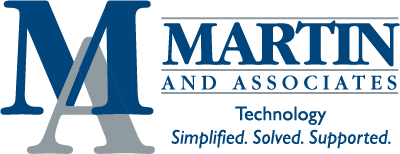Whether you know them as dashboards, data visualizations, charts, or graphical scorecards, they’re being employed all over the business world today. This is probably due to their top priority status for executive teams, as Gartner BI evaluations company Software Advice’s study on Financial Executive International CFO Technology reported. Since we are usually moving at such a rapid pace to keep up in the business world, professionals today need easy-to-understand and flexible data analyses. Martin & Associates’ technology solution is data visualization – dashboards in the form of charts, graphs, and scorecards showcase trends, successes, and problem areas through data and key performance indicators (KPIs) to more successfully direct a project, a department, or your whole non-profit organization.
Dashboards of all kinds are pretty prevalent, whether you’re monitoring your speed in your car, reviewing an expenses analysis of your credit card, or even glancing at an account activity summary for your Google account. Business Intelligence (BI) data visualizations are quite comparable to dashboards you interact with in your daily life because you’re able to quickly and sufficiently understand the status of your project, department or organization by looking at your data illustrated. However, BI dashboards are different because of their interactive nature. You can configure and adjust your analytics to get the data you require to make sense of your non-profit organization’s status. Most BI data visualizations offer built-in drill-to and drill-down capabilities, so you can zoom in on target information to make more informed choices. Now that we’ve established how generally prominent dashboards are, let’s focus on the feature and functionality offerings that can assist your non-profit by visualizing your data for more dynamic, accessible Intacct analytics.
Dashboards are able to pull information from multiple sources. If you need real-time analytics – and specifically for financial data, you could rely on the built-in dashboard functionality within Intacct. Live analyses are preferable for non-profits who require up-to-the-minute financial information – or smaller organizations who are okay using simple accounting system dashboards, without the resources to manage a BI data store, like an online analytical processing (OLAP) cube or a data warehouse. But bigger non-profits typically need to include more than just primary financial data, and they require a faster, higher performance for their data visualization, which you cannot usually achieve with a live Intacct dashboard.
Integrations from a BI data store enable larger organizations to design operational and financial dashboards without causing the Intacct database to get sluggish when pulling information for a real-time analysis. If your non-profit has multiple Intacct users, who sometimes need to pull data at the same time, a BI data store provides the necessary higher performance. You will have to ensure that your data is replicated to the data store, but it will probably still be quicker, depending on the query size. Additionally, a BI data store enables you to store multiple data source information types in one place, such as donors, members, grant project data, etc. We are happy to report that some independent software vendors (ISVs) also provide flexibility in their tools, so you can decide how you would like to integrate your data.
